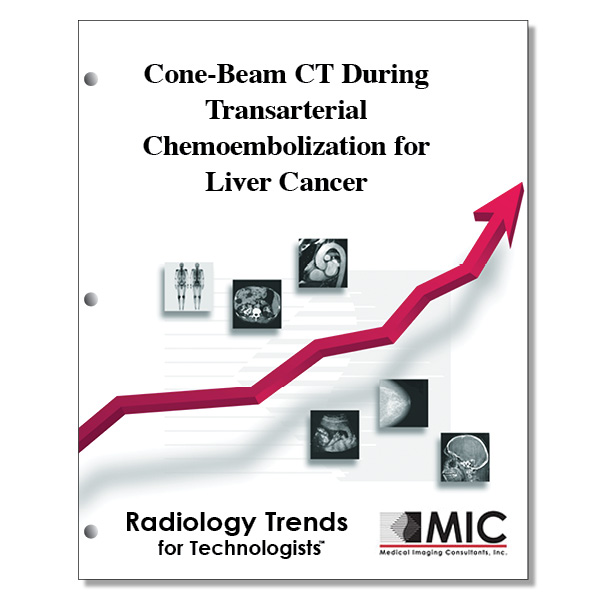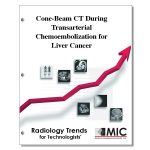

Cone-Beam CT During Transarterial Chemoembolization for Liver Cancer
The principles and purpose of cone-beam CT usage during transarterial chemoembolization of liver cancer.
Course ID: Q00467 Category: Radiology Trends for Technologists Modalities: Radiation Therapy, Vascular Interventional2.0 |
Satisfaction Guarantee |
$24.00
- Targeted CE
- Outline
- Objectives
Targeted CE per ARRT’s Discipline, Category, and Subcategory classification:
[Note: Discipline-specific Targeted CE credits may be less than the total Category A credits approved for this course.]
Vascular-Interventional Radiography: 1.00
Procedures: 1.00
Nonvascular Procedures: 1.00
Outline
- Introduction
- CBCT Imaging: How it Works
- The Principles of Projection Acquisition
- Volumetric Reconstruction
- Postprocessing
- CBCT Radiation Exposure
- Limitations of CBCT
- Patient and Equipment Setup
- General Precaution
- Patient Positioning and Equipment Setup
- Catheterization during TACE
- CBCT to ìSeeî the Tumor: Rationale and Techniques
- Rationale
- CBCT Techniques
- CBCT to ìReachî the Tumor: Rationale and Techniques
- Rationale
- CBCT Techniques
- CBCT to ìAssessî Treatment Success: Rational and Techniques
- Rationale
- CBCT Techniques
- Suggested Algorithm for the Optimal Use of the Various CBCT Techniques during Each TACE Setup
- Conclusion
Objectives
Upon completion of this course, students will:
- explain the use of CBCT in differing disease states
- differentiate between rotational angiography and CBCT imaging
- state the most common type of primary liver cancer
- name the most common therapy performed for HCC patients
- list the components of image processing algorithms used in CBCT
- describe the shape of the gantry used in CBCT imaging
- select the minimum angular range for CBCT data acquisition
- list how post-processing software affects acquired data
- state the approximate radiation dose for one CBCT abdominal scan
- compare CBCT to conventional multi-detector CT
- explain the benefit of short acquisition times
- state the maximum transversal liver diameter
- describe breath holding instructions for patient undergoing CBCT
- list the benefits of off-center patient positioning with respect to field of view
- choose the angiographic catheter size for TACE procedures
- recognize why celiac and common or proper hepatic artery angiograms are performed during TACE
- describe how CBCT provides detailed information regarding tumors
- discuss the utility of CBCT in the depiction of HCC
- choose the most common technique for intra-procedural HCC detection
- list tumor components demonstrated by the CBCT-HA technique
- list the components of a contrast injection protocol
- state acquisition delay rates for CBCT procedures
- note the gold standard modality in pre-procedural detection of HCC
- document how volumetric CBCT datasets are acquired
- state the most commonly identified extra-hepatic feeders seen at CBCT
- re-state the sensitivity of automatic computed analysis software
- state the difference between radiopaque and radiolucent with regard to CBCT techniques
- discuss the CBCT technique used to assess lipiodol deposition into the tumor after drug delivery
- recall sensitivity of intra-procedural Lip-CBCT compared with pre-procedural diagnostic imaging
- note the two CBCT techniques recommended for tumor localization
